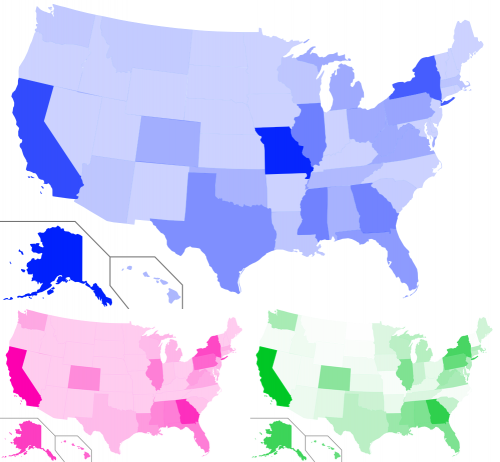From Karen Armstrong’s A History of God:
In 529 the emperor Justinian closed the ancient school of philosophy in Athens, the last bastion of intellectual paganism: its last great master had been Proclus (412-485), an ardent disople of Plotinus. Pagan philosophy went underground and seemed defeated by the new religion of Christianity. Four years later, however, four mystical treatises appeared which were purportedly written by Denys the Areopagite, St. Paul’s first Athenian convert. They were, in fact, written by a sixth-century Greek Christian, who has preserved his anonymity. The pseudonym had a symbolic power, however, which was more important than the identity of the author Pseudo-Denys managed to baptize the insights of Neoplatonism and wed the God of the Greeks to the Semitic God of the Bible.
Denys was also the heir of the Cappadocian Fathers. Like Basil, he took the distinction between kerygma and dogma very seriously. In one of a his letters, he affirmed that there were two theological traditions, both of which derived from the apostles. The kerygmatic gospel was clear and knowable; the dogmatic gospel was silent and mystical. Both were mutually interdependent, however, and essential to the Christian faith. One was “symbolic and presupposing initiation,” the other “philosophical and capable of proof—and the ineffable is woven with what can be uttered.” The kerygma persuades and exhorts by its clear, manifest truth, but the silent or hidden tradition of dogma was a mystery that required initiation: “It effects and establishes the soul with God by initiations that do not teach anything,” Denys insisted, in words that recalled Aristotle. There was a religious truth which could not adequately be conveyed by words, logic or rational discourse. It was expressed symbolically, through the language and gestures of the liturgy or by doctrines which were “sacred veils” that hid the ineffable meaning from view but which also adapted the utterly mysterious God to the limitations of human nature and expressed the Reality in terms that could he grasped imaginatively if not conceptually.
The hidden or esoteric meaning was not for a privileged elite but for all Christians. Denys was not advocating an abstruse discipline that was suitable for monks and ascetics only. The liturgy, attended by all the faithful, was the chief path to God and dominated his theology. The reason that these thruths were hidden behind a protective veil was not to occlude men and women of goodwill but to lift all Christians above sense perceptions and concepts to the inexpressible reality of God himself. The humility which had inspired the Cappodocians to claim that all theology should be apophatic became for Denys a bold method of ascending to the inexpressible God.
In fact, Denys did not like to use the word “God” at all—probably because it had acquired such inadequate and anthropomorphic connotations. He preferred to use Proclus’s term theurgy, which was primarily liturgical: theurgy in the pagan world had been a tapping of the divine mana by means of sacrifice and divination. Denys applied this to God-talk, which, properly understood, could also release the divine energeiai inherent in the revealed symbols. He agreed with the Cappedociens that all our words and concepts for God were inadequate and must not be taken as an accurate description of a reality which lies beyond our ken.
Even the word “God” itself was faulty, since God was “above God,” a “mystery beyond being.” Christians must realize that God is not the Supreme Being, the highest being of all heading a hierarchy of lesser beings. Things and people do not stand over against God as a separate reality or an alternative being, which can be the object of knowledge. God is not one of the things that exist and is quite unlike anything else in our experience. In fact, it is more accurate to call God “Nothing”: we should not even call him a Trinity since he is “neither a unity nor a trinity in the sense in which we know them.” He is above all names just as he is above all being. Yet we can use our incapacity to speak about God as a method of achieving a union with him, which is nothing less than a “deification” (theosis) of our own nature. God had revealed some of his Names to us in scripture, such as “Father,” “Son” and “Spirit,” yet the purpose of this had not been to import information about him but to draw men and women toward himself and enable them to share his divine, nature.
In each chapter of his treatise The Divine Names, Denys begins with a kerygmatic truth, revealed by God: his goodness, wisdom, paternity and so forth. He then proceeds to show that although God has revealed something of himself in these titles, what he means is not himself. If we really want to understand God, we must go on to deny those attributes and names. Thus we must say that he is both “God” and “not-God,” “good” and then go on to say that he is “not-good” The shock of this paradox, a process that includes both knowing and unknowing, will lift us above the world of mundane ideas to the inexpressible reality itself. Thus, we begin by saying that:
of him there is understanding, reason, knowledge, touch, perception, imagination, name and many other things. But he is not understood, nothing can be said of him, he cannot be named. He is not one of the things that are [nor is he known in any of the things that are: he is all things in everything and nothing in anything].”
Reading the Scriptures is not a process of discovering facts about God, therefore, but should be a paradoxical discipline that turns the kerygma into dogma. This method is a theurgy, a tapping of the divine power that enables us to ascend to God himself and, as Platonists had always taught, become ourselves divine. It is a method to stop is thinking! “We have to leave behind us all our conceptions of the divine. We call a halt to the activities of our minds!’” We even have to have our denials of God’s attributes behind. Then and only than shall we achieve an ecstatic union with God.
When Denys talks about ecstasy, he is not referring to a peculiar state of mind or an alternative form of consciousness achieved by an obscure yogic discipline. This is something that every Christian can manage in this paradoxical method of prayer and theoria. It will stop us talking and bring us to the place of silence: “As we plunge into that darkness which is beyond intellect, we shall find ourselves not simply running short of words but actually speechless and unknowing” Like Gregory of Nyssa, he found the story of Moses’ ascent of Mount Sinai instructive. Moses had climbed the mountain, he did not see God himself on the summit but had only been brought to the place where God was. He had been enveloped by a thick cloud of obscurity and could see nothing: thus everything that we cm see or understand is only a symbol (the word Denys uses is “paradigm”) which reveals the presence of a reality beyond all thought. Moses had passed into the darkness of ignorance and thus achieved union with that which surpasses all understanding: we will achieve a similar ecstasy that will “take us out of ourselves” and unite us to God.
The preceding’s length can be compared to the first 14 lines of Lao Tzu’s Tao Te Ching (translation by S. Mitchell):
The tao that can be told
is not the eternal Tao
The name that can be named
is not the eternal Name.
The unnamable is the eternally real.
Naming is the origin
of all particular things.
Free from desire, you realize the mystery.
Caught in desire, you see only the manifestations.
Yet mystery and manifestations
arise from the same source.
This source is called darkness.
Darkness within darkness.
The gateway to all understanding.
So where does that leave us (emphasis mine):
Dessys’s method became normative in Greek theology. In the West, however, theologians would continue to talk and explain. Some imagined that when they said “God,” the divine reality actually coincided with the idea in their minds. Some would attribute their own thoughts and ideas to God—saying that God wanted this, forbade that and had planned the other—in a way that was dangerously idolatrous. The God of Greek Othodoxy, however, would remain mysterious, and the Trinity would continue to remind Eastern Christians of the provisional nature of their doctrines. Eventually, the Greeks decided that an authentic theology must meet Denys’s two criteria: it must be silent and paradoxical.


